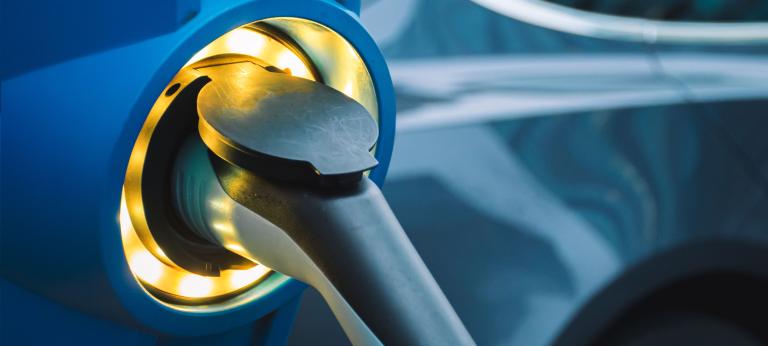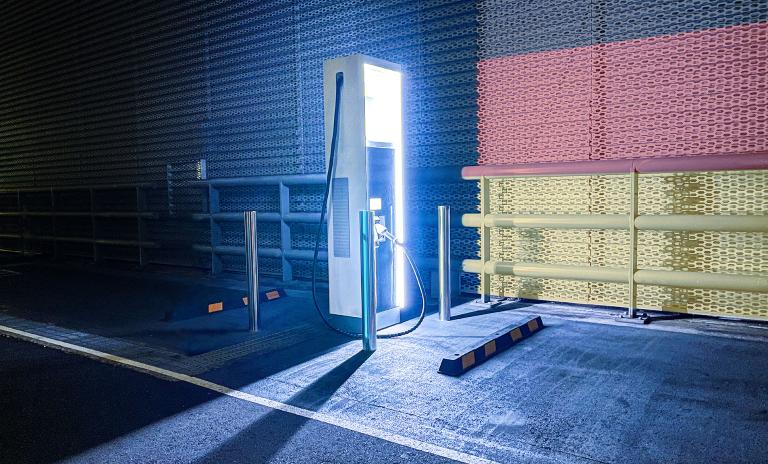EV Charging Index: Expert insight from Germany
![{[downloads[language].preview]}](https://www.rolandberger.com/publications/publication_image/23_2077_art_ev_charging_index_deep_dive_germany_cover_download_preview.jpg)
E-mobility growth in Germany is strong, but it must overcome several challenges to expand its charging network. Learn more in Roland Berger’s EV Charging Index.


EV adoption in Germany is high and continuing to rise thanks to government incentives and increased choice for consumers. However, there are several factors impacting the expansion of the public charging network. Nevertheless, Germany could still play a pioneering role in developing a new energy ecosystem around EV charging.

Germany is one of Europe’s leading countries in the adoption of electric vehicles – its EV sales penetration rate is 37% versus a global average of 16%. With transportation a major contributor to greenhouse gas emissions, EVs are seen an effective way for Germany’s large automotive sector to reduce its environmental footprint. The German government has been actively supporting the transition to e-mobility through various incentives and policies, with some success. These include financial incentives for EV buyers, tax breaks and reduced registration fees.
German automakers and technology companies have been investing in e-mobility research and development. Companies like Volkswagen, BMW, and Daimler have unveiled several new electric models, giving consumers greater choice.
They are also making technological progress, leading to improved battery efficiency, longer driving ranges, and faster charging times. As EVs become more practical and convenient, consumer interest and confidence continue to rise. The sales penetration rate of 37% is a significant jump from the first half of 2022 (24%).
It’s not all plain sailing, though: Germany faces challenges in EV affordability, charging infrastructure expansion, and battery production capabilities, all of which are linked to hesitation in its auto manufacturing sector.
There is a long-running debate between industry and politics about the extent to which Germany needs to be a pioneer in e-mobility: Germany’s great auto manufacturing heritage adds an extra element to the challenge of vehicle electrification. The likes of Tesla and some Chinese manufacturers already have certain competitive advantages in this area. Progress is undoubtedly being made, but if German automakers were to pursue electrification with even greater commitment, it would also help accelerate the expansion of its e-mobility infrastructure.
Germany’s public vehicle-to-point ratio (26.1) is well behind the global average (15.9). High investment and connection costs are set against utilization rates that remain low. The percentage of fast DC charge points in the public infrastructure (16%) is also below the global average of 22%. Meanwhile, there is a lack of clarity from OEMs in terms of future vehicle ranges to facilitate clear planning of location, capacity and utilization rates for both public and private charge points. Grid availability is also a hot topic, with a significant increase in capacity required to meet growing demand.
It’s a dynamic market and there are a variety of companies trying to gain a share in both upstream and downstream parts of the business: auto OEMs, infrastructure providers, utilities, renewable energy storage manufacturers, tech giants and even oil and gas firms. This is creating a new energy ecosystem. Profit pools are no longer restricted to installation, operation and sale of energy. New business areas are emerging, including vehicle-to-grid transfer, heat pumps, and power management and marketing on energy exchanges. This will enhance the market’s legitimacy and drive further growth.
Germany is well placed to monetize this multifaceted new energy ecosystem. It has the building blocks to give it a competitive advantage over other countries and we expect it to play a pioneering role in developing a profitable new market.
At 87%, the general satisfaction with the charging experience in Germany is above the global average of 82%. Fast charging will become increasingly important. Currently, just 16% of Germany’s public charge points are DC chargers, some way below the global average of 22%. Location is key: charging stations need to be where people spend time, such as shopping centers or workplaces. Expanding the charging infrastructure in urban areas and along major transportation routes is crucial to meeting this demand.
Charging needs be hassle-free and fit naturally into consumers’ daily lives. Access to real-time information about charging station availability, status, and pricing is essential for customers to plan their trips effectively. Customers expect seamless interoperability between charging networks, including a standardized payment system. And they are demanding more from charging stations themselves, including options such as free Wi-Fi and comfortable waiting areas. Electricity sources also matter, and customers increasingly prefer charging solutions powered by renewable energy sources.
![{[downloads[language].preview]}](https://www.rolandberger.com/publications/publication_image/23_2077_art_ev_charging_index_deep_dive_germany_cover_download_preview.jpg)
E-mobility growth in Germany is strong, but it must overcome several challenges to expand its charging network. Learn more in Roland Berger’s EV Charging Index.
Sign up for our newsletter and get regular updates on Automotive topics.